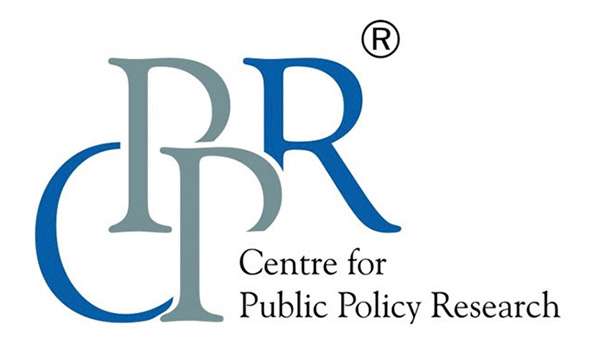Articles

CPPR 20th Anniversary Programmes
July 22, 2024
Attempted Assassination of Donald Trump: New Challenges to Personal Protection Mechanisms
July 30, 2024An Analysis of Past Gender Budgets in India

Gender responsive budgeting (GRB), started in 2005-06, is a step in the direction of promoting equitable distribution of public resources for a historically silenced, abused and neglected population. Even though not legally mandated, a separate gender budget statement has been brought out as part of the Expenditure Budget every year since 2006. Over the course of the last decade, the NDA Government undertook a shift from safety and security-oriented schemes during Jaitley’s ministerial terms to empowerment-oriented schemes during Sitharaman’s terms. This is a paradigm shift in the approach towards treating women as a vulnerable section to visualising a women led development strategy in the 2023 interim budget. Considering the BJP fell short of its target of 400+ seats during the recent parliamentary elections, a surge in welfare-oriented schemes is to be expected for the Indian populace, with a particular focus on women.
The steady rise in the share of the Gender Budget within the Union Budget is commendable.
However, upon close analysis, it is observed that the allocations for the Ministry of Women and Child Development have declined in the last five years.
Staying true to the commitment towards Saksham Anganwadi and POSHAN 2.0, the interim budget saw an increase of approximately 3% in allocation to the scheme from the previous year. The highest allocation under Part A is Rs. 54,500.14 crore for the PM Awaas Yojana (Rural), followed by Rs. 26,170.61 crore for the PM Awaas Yojana (Urban) and Rs. 15,047.00 crore for the National Rural Livelihood Mission – Aajeevika. The highest allocation under Part B was bagged by the Jal Jeevan Mission with Rs. 34,162.32 crore, followed by MGNREGA with Rs. 28,888.67 crore and Saksham Anganwadi and POSHAN 2.0 with Rs. 15,900 crore. On comparing Part A, constituting schemes with 100% provisions for women, and Part B, constituting schemes with 30-99% allocations for women, it is observed that Part B has received Rs. 1,97,295.95 crore with an involvement of 28 ministries and departments, over Part A, which received Rs. 1,12,394.15 crore with an involvement of 19 ministries and departments.
The Lakhpati Didi scheme, which empowers SHG members to pursue entrepreneurial ventures, is expected to be highlighted within the Stree Shakti element of the Union Budget 2024-25. Cervavac, the indigenously produced vaccine for cervical cancer, remained financially inaccessible to the majority in India. Considering its push in the Interim Union Budget, vaccination is expected to be included within the broader immunisation scheme. Although there has been no indication of a brand new scheme focusing on women’s safety, the nation waits in anticipation for the FM to evidence its commitment to ensuring the safety and security of women by increasing allocations for the Safe City Projects, women-specific cybercrime prevention and training, capacity building and gender sensitisation for police personnel. The Ministry of Power and the Ministry of Civil Aviation, being new entrants in the Interim Budget, are expected to receive allocations for schemes that provide 30-99% provisions for women. However, the basis of these allocations as Part A and Part B under the Gender Budget statement lacks clarity. This ambiguity further exacerbates the performance audits undertaken by CAG as well. Again, the performance audits are not done for every gender allocation as well, which requires a course correction.
The Global Gender Gap Index 2024, published by the World Economic Forum on 11th June 2024, has assigned India a rank of 129 out of 146, with only Maldives and Pakistan below us in South Asia. These numbers show that efforts in GRB need to be reoriented, as suggested recently in a report by NIPFP, where they recommend “a feedback linkage between outlays and outcomes.” Though the gender budgets over the years have allocated significantly for schemes like PM Awaas Yojana (Rural) and Beti Bachao Beti Padhao, there is a lack of impact assessment of the utilisation of allotted funds.
The budget needs to focus on creating job opportunities for women, which requires improving working conditions that help flexibility and provide an effective alternative to supporting care responsibilities. GRB, which has been instituted for the past 20 years, needs an evaluation of the impact it has had on the female labour force participation and the safety, security and well being of women as equal citizens. The increase in allocation towards gender budgets is appreciable; however, every ministry and department has to have a gender test—an assessment of the potential differential impact on women and men of all government allocations perceived to have significant relevance to gender equality, a strategy adopted by Belgium and other European countries in their gender budgeting strategies. Every ministry and department should assess their allocation for every scheme and plan from a gender lens and outline the impact on women and other gender minorities for informed decision making (Quinn 2017). If the goal is to achieve gender equality, the sex disaggregated data has to be collected and analysed for the allocations for women to understand the real time effect, both qualitative and quantitative, in an Indian woman’s life.
This article is authored by CPPR Senior Research Associate Anu Maria Francis and Research Assistant Eliza Jo varghese.
Views expressed by the author are personal and need not reflect or represent the views of the Centre for Public Policy Research.



